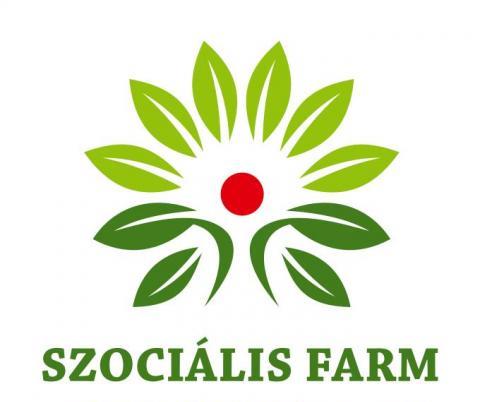
Bond Playful Resources include experiential and participatory tools for facilitating an open, empathic, collaborative and creative environment for the project’s stakeholders to connect with one another and to discover new insights on specific issues or topics towards forming better understanding, strategic visions and solutions.
LEGO® SERIOUS PLAY
The project explored new ways of engaging farmers and policy-makers in activities that help ease understanding and promote the connection between them; specifically, the crossings between ‘play’, ‘games’ and ‘gamification’ in order to provide a more elastic approach to fostering the building of social capital. This new interface will facilitate greater capabilities for social learning and interactions. The approach will devise better ways of working with each other, to come up with common solutions and foster constructive alliances. The approach was holistic and participatory to ensure the needs of the stakeholders were taken into consideration.
In particular, BOND Serious Play is an interactive and playful method for problem-solving and developing critical thinking skills. Application of the method results in a rich environment that facilitates an engaging bonding experience. Bond Serious Play is a tool derived from the LEGO® SERIOUS PLAY® (link HERE) methodology, a facilitation methodology created by The Lego Group.
The LEGO® SERIOUS PLAY® Method is a technique which improves group problem-solving. By utilising visual, auditory and kinaesthetic skills, the Method requires participants to learn and listen, and it provides all participants with a voice. The Method serves as a shared language regardless of culture or position. It is also a method that requires a trained LEGO® SERIOUS PLAY® facilitator.
Game Changers: What is Your Story?
This toolkit guides you through how to deliver ‘What Is Your Story?’: a playful card-based activity to engage learners in creative and abstract thinking. ‘What Is Your Story?’ encourages learners to use their visual literacy and oral communication skills to explore a topic in a fun, challenging, social activity.
‘What Is Your Story?’ can be used with a range of audiences, across levels and disciplines, and can be made topic specific either by structuring workshop delivery around given topics, and/or adapting the design of the cards with new images. ‘What Is Your Story?’ has three card elements: People, Context and Activity. The aim of the game is for players to create a narrative around a given topic using the People, Context and Activity cards, and to share their story with other players. The activity encourages learners to employ a complex combination of skills to link disconnected images to a theme, to create an abstract concept. ‘What Is Your Story?’ encourages learners to share their ideas and develop confidence in doing so, and requires peer review of ideas shared.
The method follows the steps:
Step One: Decide if your cards are going to be learning context specific
Are you going to use your cards in a specific class or workshop? Do you want the players to create narratives around specific themes?
If yes, then you might want to consider whether the images on the cards are visual cues specific to a given theme or discipline, or whether the cards can be more generalised cues. When choosing what images you want as cues on the cards, you can make them as broad as possible, to allow the cards to be used in multiple scenarios or with any theme (see original version). Or, you can make the images relate to an area of interest or a particular learning context (design your own!).
Think of who you want to use the cards, what ideas and narratives do you want them to think about during the game, and what kinds of images might be most appropriate to the learning context. If you would like to use the original version of ‘What Is Your Story?’ you can download and print it yourself, or alternatively contact the DMLL to see if we have a printed pack available. If you would like to design your own, see Step Two and Three.
Step Two: Select images for the cards
Now that you have decided what kinds of images you want to use, you can go about collecting your images to be used as visual cues for the three categories. To do this you can either make your own images or find existing images that are held in the public domain.
If you want to make your own images, you can draw images, take your own photos or use any other means, so long as the resulting images are 300 dpi and can be visually interpreted by the learners/audience you have in mind.
If you want to use existing images you will need to find public domain images, or images that you have the appropriate permission to use. To find images held in the public domain, use a searchable image hosting site for images held under the appropriate license.
This step is time intensive. It can take a surprisingly long time to collect enough good quality images to make a deck of cards. Make sure you give yourself enough time to find and curate the images you want to use for each story element: People, Activity and Context.
Step three: Designing your own cards!
To help with this stage, this toolkit includes design templates to design you cards. Before you get started consider:
• How and where are you printing your cards?
• What size will the cards be? (e.g. poker card sized, postcard sized, A4)
• What is the necessary file setup needed by your print supplier?
• Are there any necessary branding or aesthetic requirements you need to follow?
This method was used during the retreat with board members on 6th February 2019 in Coventry Below are some pictures of the event.
For more information:
Designing Cards (https://gamify.org.uk/portfolio/what-is-your-story-cards/)
Workshop (https://gamify.org.uk/workshop-what-is-your-story/)
Play now with the cards (https://wiys.gchangers.org/)
REMIXING PLAY APPROACH
Remixing play approach is a simplified design thinking approach with play as an inspiration for facilitating a more frugal approach for creating new playful tools and resources.
The approach has a key aim to make game-based design thinking more accessible to anyone with different literacies in game playing. Inspired by the engaging nature of play and gameplay as a tool for learning, the workshop emphasises on designing playful experiences suited for the target audience (clients, stakeholders, customers, students, employees, etc.), which will inform the types of services, products and/or technologies that can be used to facilitate those experiences.
The act of play often produces intrinsic engagement and pleasure that enhance our interaction with services, products, problems, challenges, etc. It is therefore possible for us to be inspired by the mechanics of play for informing our strategy, design and construction of solutions that will be more human driven, more emotionally intelligent.
Simple example:
• Challenge – how to increase sales of a product?
• Inspiration – Hide and Seek with simple mechanics – Hiding and Seeking!
• GamePlan – Hide rare items in products for customers to discover and collect. If done right, the Willy Wonka effect can be achieved when customers are encouraged to purchase more in order to stand a chance to discover those rare items.
The game plan can lead to a strategy, a service and/or a product! As the process is based on the Design Thinking process, it will be iterative, agile and incremental in order to refine a gameplan. The process will exploit playfulness and engagement to help encourage creativity and innovation.
The method follows the steps:
Step One: Understand the needs, context and audience
What are the key challenges you wish to address? What are the objectives/aims/goals? Who are your stakeholders? And in what context would your solution/intervention would be implemented?
Step Two: Get inspired by existing play and gameplay
What play and game activities that you like most? List them out? What are the core mechanics of those activities? Are there any particular game and play strategies that you can think of?
Map the different mechanics and use them as inspirations for the next step.
Step three: Map the needs and goals to the mechanics and strategy
How would you engage the stakeholders? Will certain strategies promote the aims and objectives you set out? What play and game activities that would develop certain actions, attitudes and/or behaviour?
Step four: Design your gameplan
Design and develop your strategy/solution/product/experiences that will address the challenges, achieve the goals and engage the stakeholders in the context that you set out in the beginning. Test your gameplan.
Step five: Pitch your gameplan
Share your gameplan and get feedback from your peers.
Remixing play into a gameplan workshop, Trinidad from Sylvester Arnab (link HERE)
This method was used during the “Training of trainers” organized in Coventry on 4-5 February 2019. During this event the stakeholders created their own playful resource which included games to support team working and strategic thinking and a playful farm visits using the escape rooms and treasure hunt approach. Following some picture of the event.
A Blueprint for Creating Playful Work Environments LINK
















